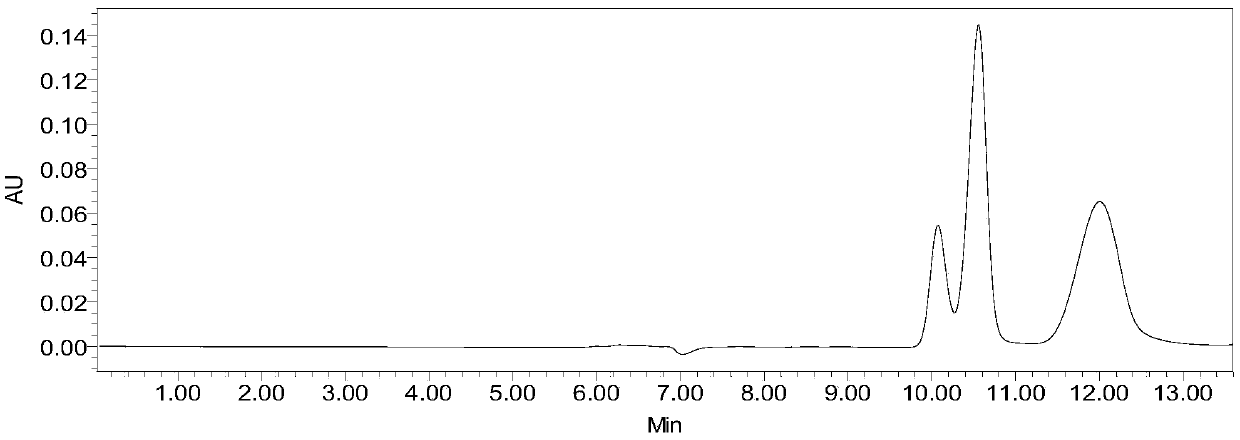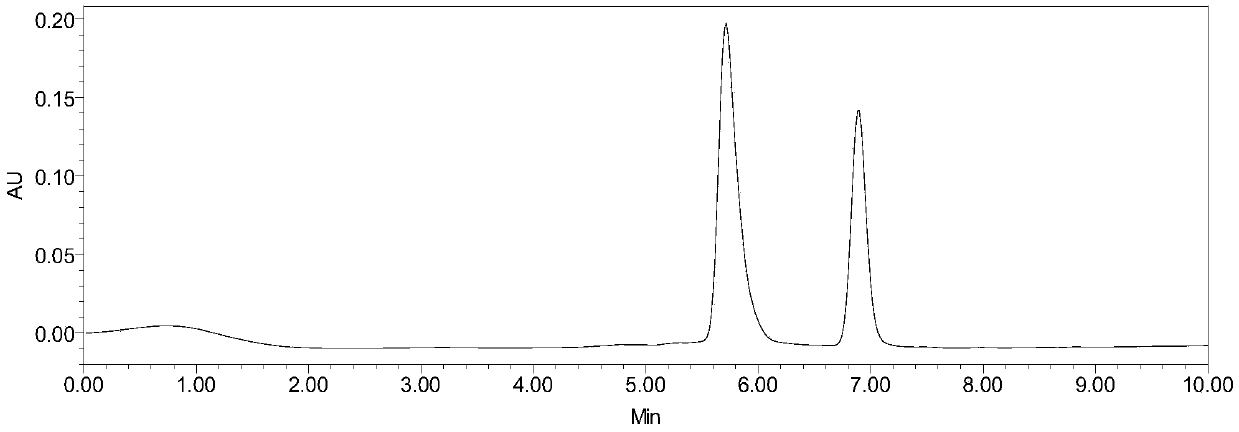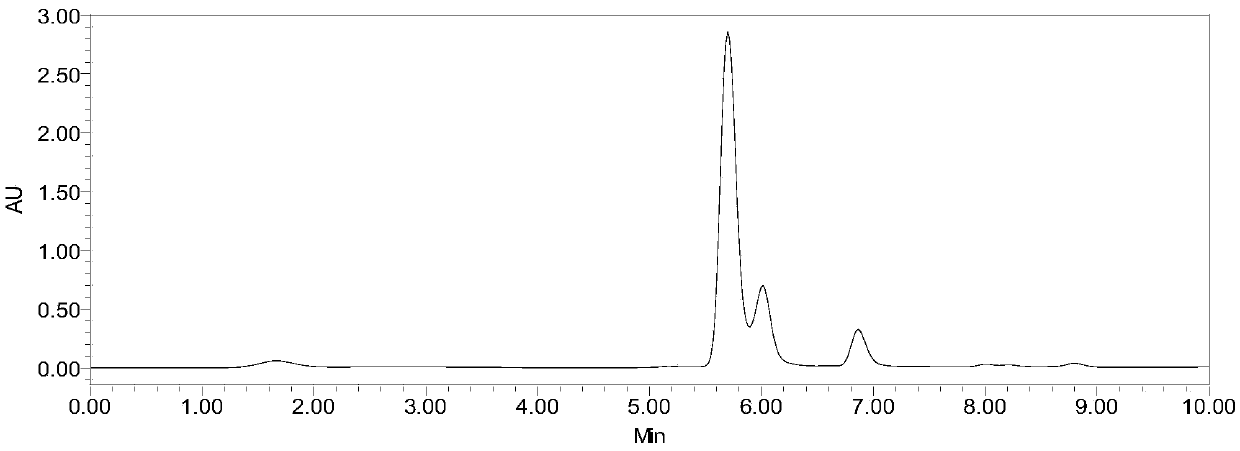Method for quantitative detection of gluconic acids and glucono lactone
A quantitative detection, glucaric acid technology, applied in the field of separation and detection, can solve the problems of complicated methods, low detection efficiency, and no detection, and achieve the effect of simple method and good stability
- Summary
- Abstract
- Description
- Claims
- Application Information
AI Technical Summary
Problems solved by technology
Method used
Image
Examples
Embodiment 1
[0022] Example 1: Joint detection of glucose series acids and lactones in mixed samples by SB-Aq chromatographic column and amino chromatographic column
[0023] This is achieved by:
[0024] (1) Use mobile phase 0.025mol / LKH respectively 2 PO 4 (pH2.5) solution to prepare standard samples of gluconic acid, glucuronic acid, calcium gluconate and glucaric acid-1,4-lactone at 5 mg / mL each, and after filtering through a 0.22 μm microporous filter head, 4 standard samples Take 500 μL of each product and mix, that is, the mixed standard product with a concentration of 1.25 mg / mL, and perform high performance liquid chromatography determination respectively. Using AgilentSB-Aq chromatographic column (4.6mm×250mm, 5μm), chromatographic conditions: mobile phase is 0.025mol / LKH 2 PO 4 (pH2.5), flow rate 0.5mL / min, column temperature 30°C, injection volume 10μL, UV detection wavelength 210nm. Under this detection condition, the retention times of gluconic acid, glucaric acid, and g...
Embodiment 2
[0034] Determination of glucaric acid-1,4-lactone content in black tea fermented liquid by SB-Aq chromatographic column.
[0035] (1) Bacterial solution sample pretreatment: Take 500 μL of bacterial solution, place it in a 3K ultrafiltration tube for centrifugal ultrafiltration to remove bacteria, protein and other macromolecular substances, collect the filtrate and place it in a 2 mL centrifuge tube.
[0036] (2) Adopt AgilentSB-Aq chromatographic column (4.6mm×250mm, 5μm), chromatographic conditions: mobile phase is 0.025mol / LKH 2 PO 4 (pH2.5), flow rate 0.5mL / min, column temperature 30°C, injection volume 10μL, UV detection wavelength 210nm. The treated bacterial liquid is loaded into the sample to obtain the SB-Aq chromatogram of the black tea fermented liquid ( image 3 ), retention time 6.867min is glucaric acid-1,4-lactone, and its peak area is 3234720, according to the regression equation that glucaric acid-1,4-lactone records on the SB-Aq chromatographic column calc...
Embodiment 3
[0038] Amino column / SB-Aq column combined separation and determination of gluconic acid, glucuronic acid, glucaric acid and glucaric acid-1,4-lactone in sweet potato fermentation broth.
[0039] (1) Bacterial solution sample pretreatment: Take 500 μL of bacterial solution, place it in a 3K ultrafiltration tube for centrifugal ultrafiltration to remove bacteria, protein and other macromolecular substances, collect the filtrate and place it in a 2 mL centrifuge tube.
[0040] (2) Adopt AgilentSB-Aq chromatographic column, chromatographic conditions: mobile phase is 0.025mol / LKH 2 PO 4 (pH2.5), flow rate 0.5mL / min, column temperature 30°C, injection volume 10μL, UV detection wavelength 210nm. The processed bacterial liquid is loaded to obtain the SB-Aq chromatogram of the sweet potato fermentation liquid ( Figure 4 ), retention time 6.877min is glucaric acid-1,4-lactone, and its peak area is 863069, according to the regression equation that glucaric acid-1,4-lactone records on...
PUM
 Login to View More
Login to View More Abstract
Description
Claims
Application Information
 Login to View More
Login to View More - R&D
- Intellectual Property
- Life Sciences
- Materials
- Tech Scout
- Unparalleled Data Quality
- Higher Quality Content
- 60% Fewer Hallucinations
Browse by: Latest US Patents, China's latest patents, Technical Efficacy Thesaurus, Application Domain, Technology Topic, Popular Technical Reports.
© 2025 PatSnap. All rights reserved.Legal|Privacy policy|Modern Slavery Act Transparency Statement|Sitemap|About US| Contact US: help@patsnap.com



